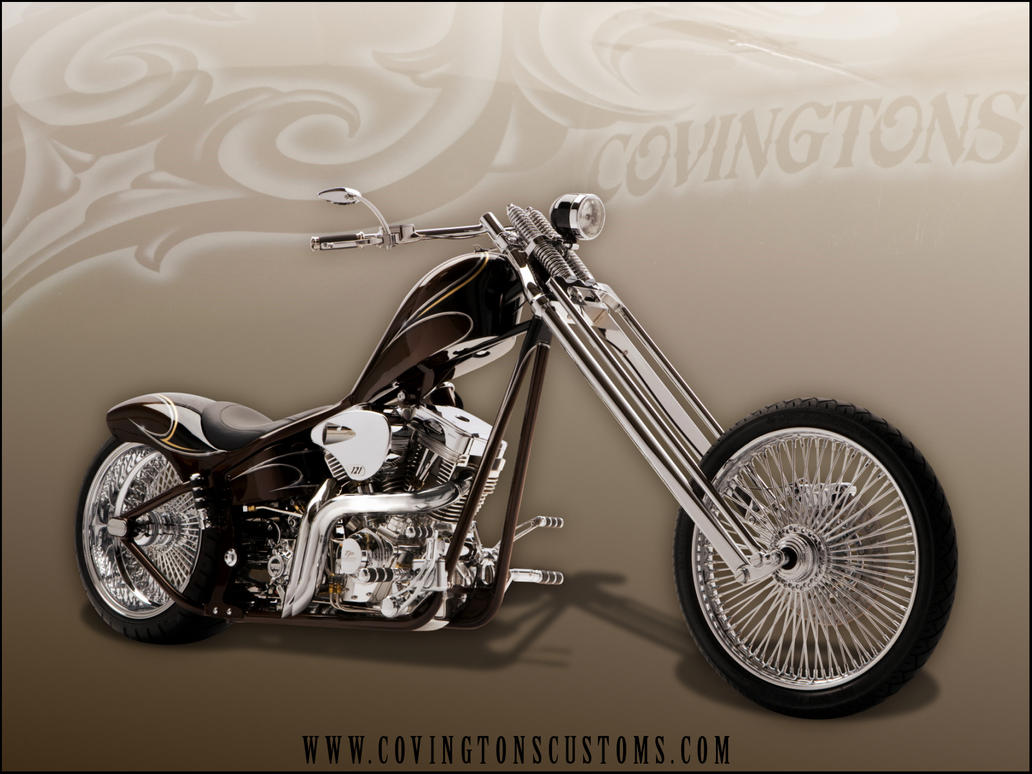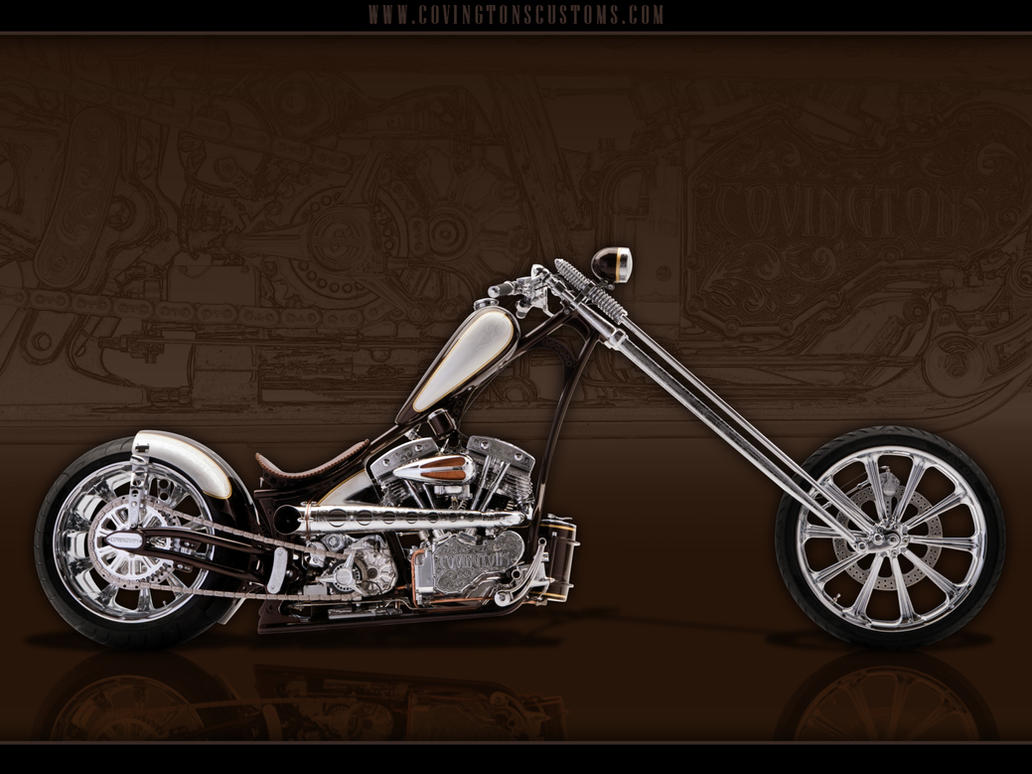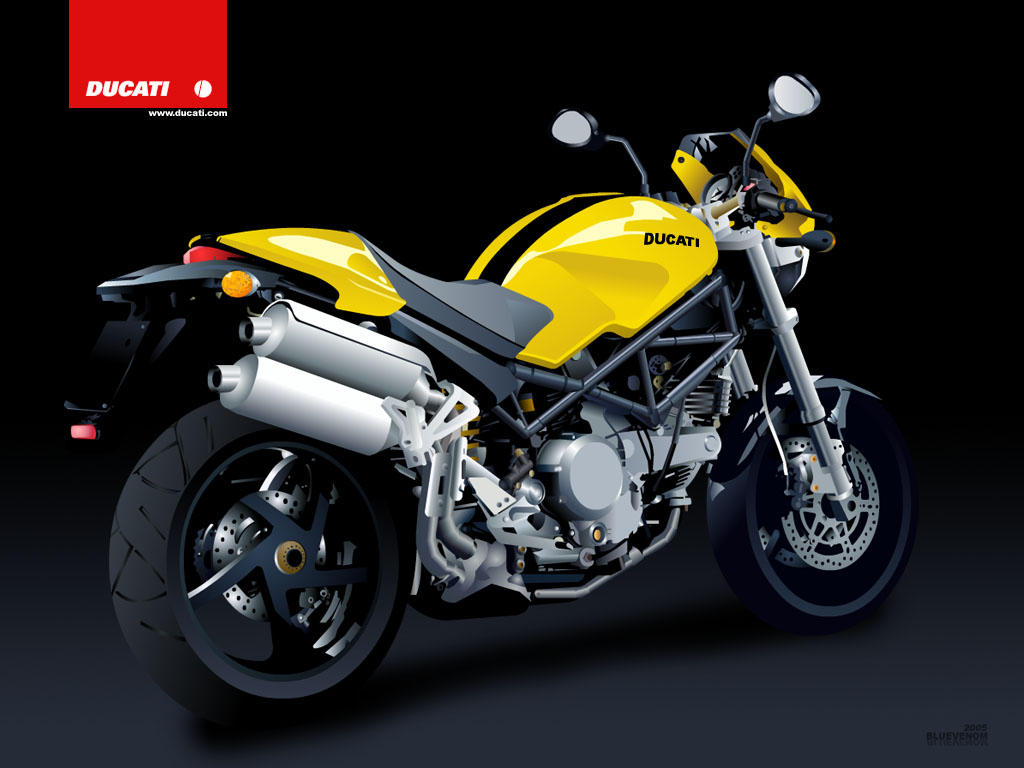


 2009
2009

|
|---|
Big Green has released the details of the 2010 model line today, and some of the changes are pretty nice. Some of them are simply…meh.
First up is the 2010 ZX-10R Ninja. This is one of the “Meh” entries in the lineup. Not much new to talk about here. They’ve modified the bodywork a little bit. They’ve changed the steering damper to a new–and presumably better–one. And they’ve painted the muffler black. Other than that, next year’s ZX-10R is pretty much status quo ante.
My best advice is to wait for a year if you want a big Ninja. Supposedly, Kawasaki is gonna put the bike through a complete redesign for the 2011 model year. Until then, the new Ninja is pretty much what the old Ninja was.
Another “meh” is the 2010 Versys. It has new headlights, that kind of have a BMW R1200R kind of feel. But it’s is, again, pretty much the same bike as this year’s.
I think we’re done with the “Meh” bikes in the line-up, though.
There are some nice changes to Kawasaki’s premier sports tourer. Not, unfortunately, some of the changes rumored earlier this year, like the night vision and HUD I wrote about a while ago. Instead, the Connie gets something called KTRC, Kawasaki’s first-ever traction control system. Also new is the the K-ACT II anti-lock braking system to control those panic stops, a larger windscreen to solve the complaints about the effectiveness of wind management, bodywork redesigned for better heat management, heated grips, upgraded suspension, and new Bridgestone tires.
Oh, and it’s blue. Blue is nice.
The Z1000 is the bike where major changes have occurred. The current incarnation of the Z1000 is OK…but just OK. Nice, but the power is kind of soft and squishy. The new Z1000 looks like a big step forward. It’s pretty much a completely new motorcycle, in fact.
First, the engine is completely new. It’s a 1043cc I-4 power plant adapted from the ZX10R, and it provides 136HP and 91lb-ft of torque. That’s a serious improvement over the current incarnation’s 953cc mill from the ZX-9. That means noticeably better acceleration, and improved top-end speed.
Next, the steel backbone frame is gone, replaced by an all-aluminum frame with a monocoque main spar. Fuel storage is now beneath the seat, so the narrower frame and changed fuel tank offers a narrower profile for better knee gripping. That’s helped by the narrow bottom and flared top of the…uh, whatever the thing on top now is, instead of a fuel tank.
There are lots of suspension changes, too, with the rear suspension being an all-new “horizontal” design, and more aggressive front-end geometry.
The styling has been updated, too, giving it a noticeable B-King vibe, but whether that’s a good thing or not is in the eye of the beholder.

 (Advert 1954)
(Advert 1954) (Johnson Motors Inc. US Advert 1954)
(Johnson Motors Inc. US Advert 1954) Welnu in Castletown op het Isle of Man kwamen wij
Welnu in Castletown op het Isle of Man kwamen wij 

 A Triumph Tiger 110 650 cc 1960
A Triumph Tiger 110 650 cc 1960


 panels from the smaller twins in 1961 which earned it the nickname 'bathtub' and made it look outdated, so was replaced by the Triumph Bonneville.
panels from the smaller twins in 1961 which earned it the nickname 'bathtub' and made it look outdated, so was replaced by the Triumph Bonneville. The Triumph Tiger 110 650 cc OHV Twin was Triumph's fastest production motorcycle to date, developed for the American market which wanted a higher power output. The T100 first appeared in 1954. Originally produced with a cast iron cylider block and head, this was quickly replaced with a light alloy cylinder head with special airways to improve cooling and austenitic iron valve set inserts. The external oil fed pipes were also replaced with internal oilways via the pushrod tubes.
The Triumph Tiger 100 was named because it was capable of 100 mph (160 km/h), so it was an obvious marketing idea to call the new bike the Tiger 110 - although technically the best one way speed obtained by The Motor Cycle magazine in tests was 109 mph (175 km/h) (with a strong tail wind) - but the speedometer was reading 114 mph (183 km/h), so there was a margin of error.
By 1961, the Tiger 110 was being replaced by more modern models, such as the T120 and had acquired the enclosed panels from the Triumph Twenty One which were fashionable at the time but gained it the nickname of the 'bathtub'.
 World Speed Record:
World Speed Record: On 5 September 1962, at Bonneville Salt Flats American racer Bill Johnson secured the world land speed record on a heavily modified Triumph T110 with a top speed of 224.57 mph (361.41 km/h). This success led to the development of the Tiger T110's successor - the Triumph Bonneville.
On 5 September 1962, at Bonneville Salt Flats American racer Bill Johnson secured the world land speed record on a heavily modified Triumph T110 with a top speed of 224.57 mph (361.41 km/h). This success led to the development of the Tiger T110's successor - the Triumph Bonneville.(Tekstbron: Wapedia )




But now a Triton completely different...
 I’m not sure about you, but I’d love to wake up on Christmas Day and find this in my garage. This gorgeous Triton is the brainchild of French designers Frank Charriaut and Vincent Prat from Southsiders MC, and was built by the extraordinarily talented Daniel Delfour, one of France’s leading motorcycle builders.
I’m not sure about you, but I’d love to wake up on Christmas Day and find this in my garage. This gorgeous Triton is the brainchild of French designers Frank Charriaut and Vincent Prat from Southsiders MC, and was built by the extraordinarily talented Daniel Delfour, one of France’s leading motorcycle builders.
As with most beautiful motorcycles, there’s a story behind ‘CP Project #1′. It was inspired by a trip to the 2008 Legend Of The Motorcycle event in California; Delfour’s exquisite Norton Ala’verda caused a stir there, so the three friends hatched plans for a sequel. “As English motorcycle fans, we choose to use a Norton featherbed frame and a Triumph 750 Bonneville engine,” says Vincent. “But we didn’t want to make the thousandth café racer or Triton; we decided to follow our own road. We started designing a mix of Batman’s motorcycle with a T.Rex fastback and Cat Woman’s curves. Inspiration came directly from the culture of comics.”
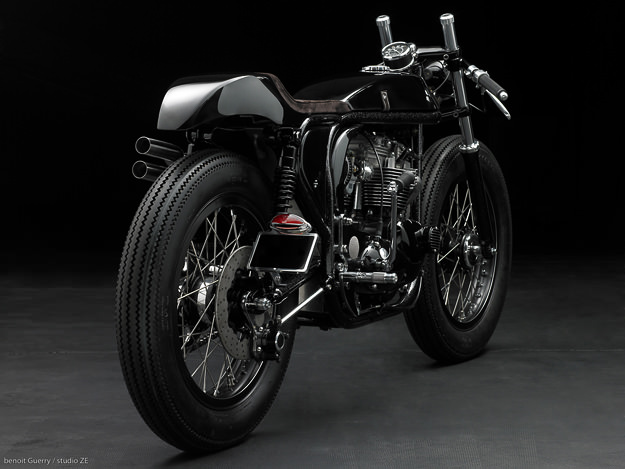
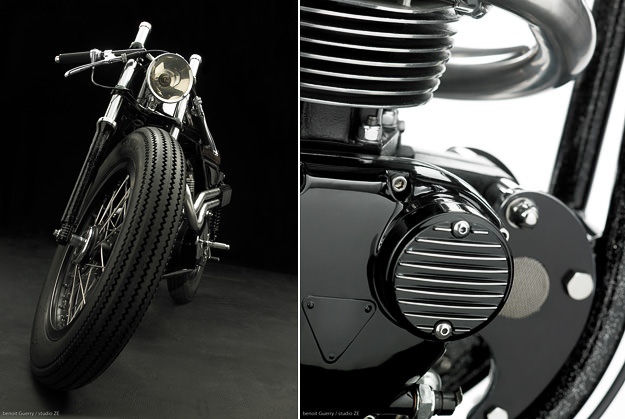
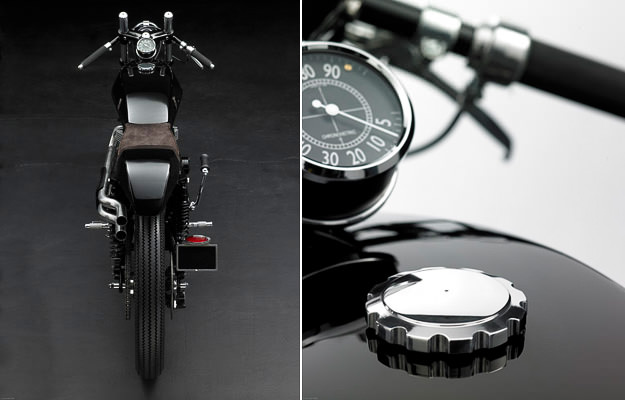
 (Bron:)
(Bron:)


|
|---|
|
|---|
